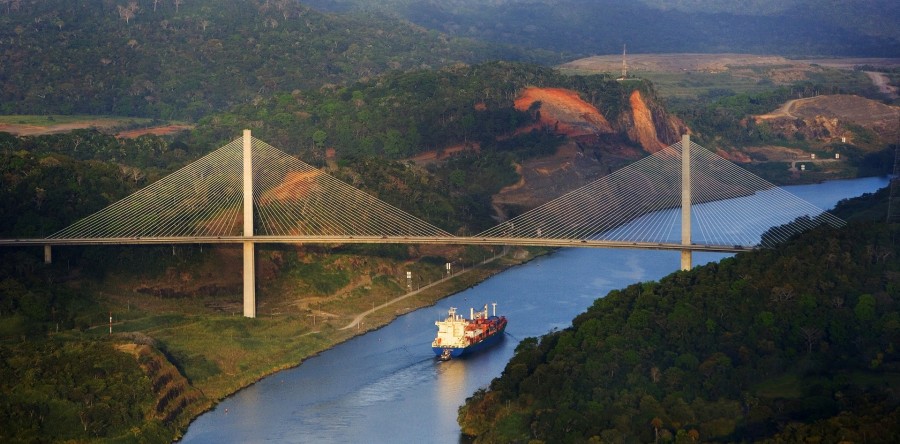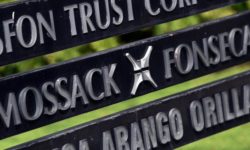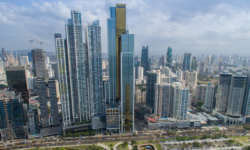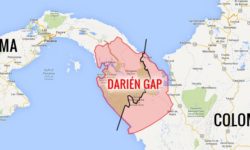The Washington Times just published these facts about Panama and how its success can be traced to the use of the U.S. dollar as official currency.
Panama has come a long way in a short time, more than doubling its per capita gross domestic product in the past decade. At the end of June 2016, it opened the new canal next to the old one that could no longer accommodate the current generation of post-Panamax ships.
Panama became an independent country in 1903 when it seceded from Colombia — with the help and encouragement of the United States, which wished to build a canal across the isthmus between the Pacific Ocean and the Caribbean Sea. The U.S. Army Corps of Engineers finished building the canal in 1914. The 10-mile wide Canal Zone was considered sovereign U.S. territory, until a treaty that was negotiated during the Carter administration to return the canal to Panama. Some will recall that the United States invaded Panama back in 1989 to get rid of the corrupt drug-trafficking dictator, Manuel Noriega, who was threatening the canal in a way that violated the treaty that gave the canal to Panama. Panama received full sovereignty over the canal in 1999, at which time the United States removed the last of its military bases. When the Carter administration agreed to turn over the canal, there was widespread concern that the Panamanians would not be sufficiently competent to run the canal and ensure that it would remain an international waterway. The Panamanians proved their critics wrong and not only ran the canal in a highly competent fashion, but then undertook the massive and complex task of building the new canal.
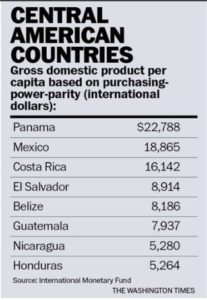 As can be seen in the accompanying table, Panama has by far the highest income in Central America. The question is, why has Panama done so much better than its regional competitors? The standard answer, from both government officials and business leaders I spoke with, is that Panama does not have a central bank. That is, Panama uses the U.S. dollar as it currency. As a result, it cannot “inflate” its way out of any temptation to spend far more than tax revenue. Using the dollar without a lender of last resort serves as a natural debt break and causes some spending and taxing restraint — even though both are above the growth maximizing rate.
As can be seen in the accompanying table, Panama has by far the highest income in Central America. The question is, why has Panama done so much better than its regional competitors? The standard answer, from both government officials and business leaders I spoke with, is that Panama does not have a central bank. That is, Panama uses the U.S. dollar as it currency. As a result, it cannot “inflate” its way out of any temptation to spend far more than tax revenue. Using the dollar without a lender of last resort serves as a natural debt break and causes some spending and taxing restraint — even though both are above the growth maximizing rate.
Panama does not have currency controls, and so the use of the U.S. dollar is as free as using the same U.S. dollar in each of the U.S. states. Having the dollar as its currency gives Panama’s banking system a competitive advantage over other countries in the region, because there is no exchange-rate risk or costs of currency conversion to U.S. dollars.
Despite accusations of corruption in the courts, Panama does have a reliable system of real property registration. Panama City has a spectacular skyline with many very tall, modern buildings — the Trump Tower being the tallest at 932 feet — with eye-catching designs and with many new ones under construction. The billions of dollars of investment in this real estate is tangible evidence that investors believe their real property rights are secure.
Even though Panama is less rich in natural resources than most of the other countries in the region, it has been successful in using the canal to create a regional and, to some extent, even a global logistics industry. Panama has connected the Caribbean Sea with the Pacific Ocean, not only with a state-of-the-art waterway, but also with rail, air and a modern expressway where one can drive from Colon to Panama City in less than an hour.
Panama has also been a leader in the creation of “free zones,” where goods and services meant for export, or re-export for logistics reasons, are exempt from taxation and some regulations. The oldest and largest of these in the Colon Free Zone of the Caribbean side of the canal. In its almost 70 years of existence, it has successively evolved in the services it offers global merchants and manufacturers.
Panama received a black eye with the “Panama Papers” scandal, despite the fact they revealed that almost no wrongdoing was done in Panama. What was revealed was that individuals in a major Panamanian law firm provided some wealthy and well-known individuals from around the world advice and assistance in setting up structures and accounts in many other countries to minimize tax liabilities — most of which appears to have been perfectly legal. The real sin was revealing the hypocrisy of many of the global elite, who seem to believe that only others should pay taxes.
As for Panama, the government and financial community now engage in considerable information-sharing with the U.S. and European governments — not a good place to hide dirty money.
For Panama to continue to grow at high rates, it will need to do even more to combat corruption, and improve tax, spending and regulatory policies. But the Panamanians do deserve high marks for their improbable success during the last couple of decades.

